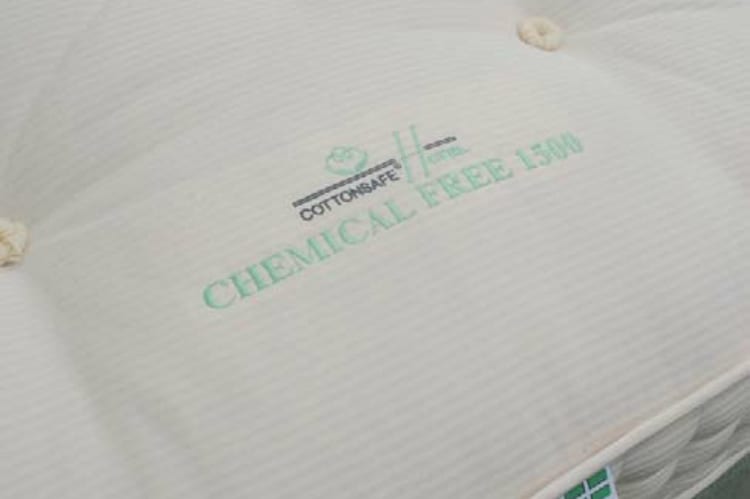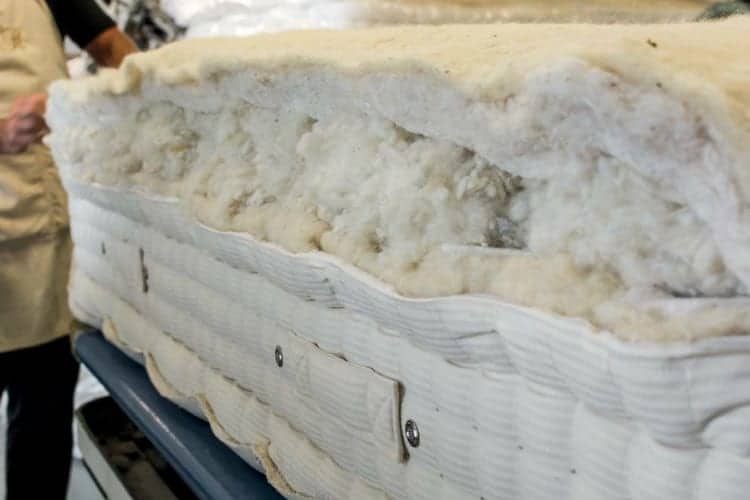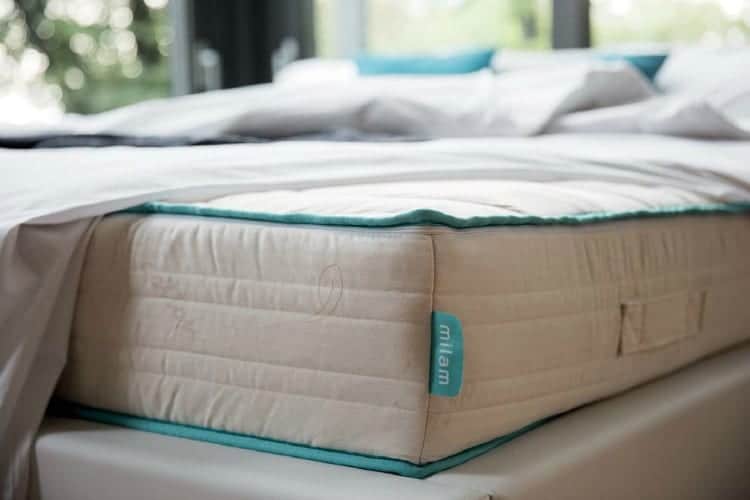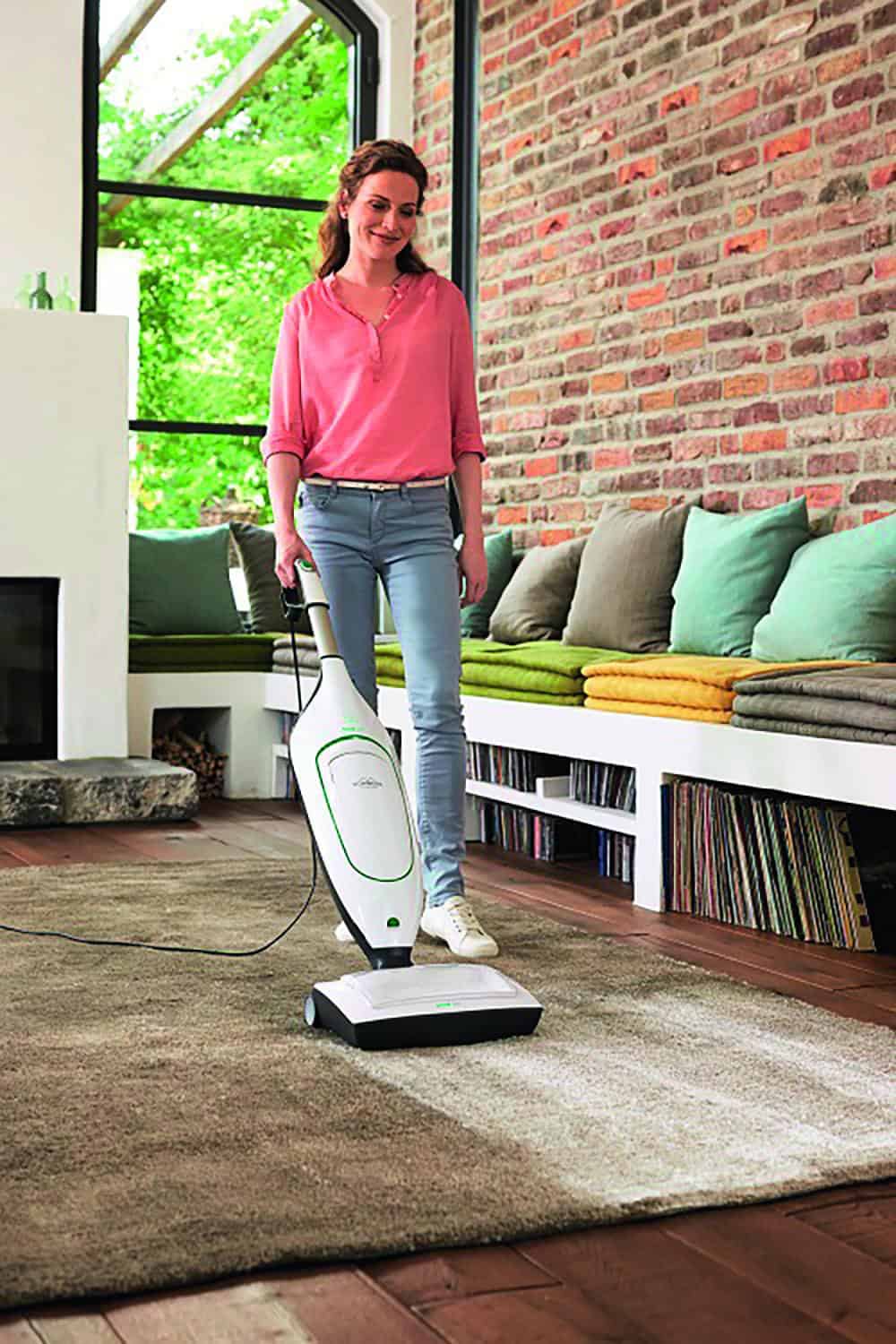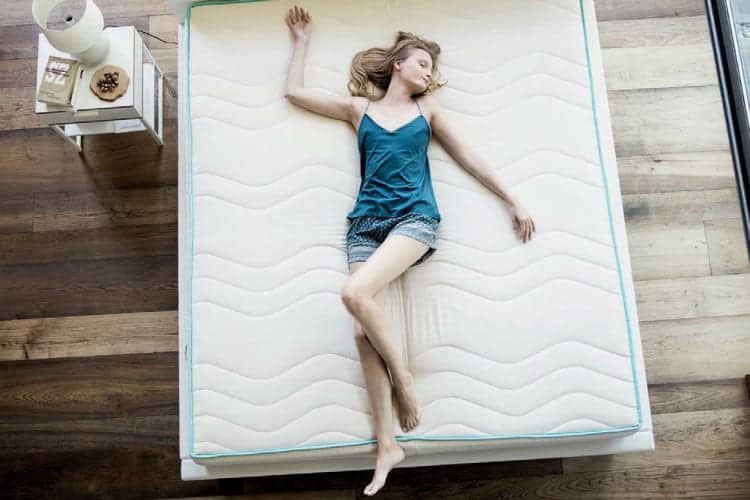
Investment by a high-end inn, guesthouse or hotel is increasingly focused on the demand for natural and ecologically friendly produce from locally sourced breakfasts to natural gins. The same trend is now escalating for mattresses. Bill Lumley speaks to manufacturers and finds them having to jump through hoops to comply with regulation
Replacing your mattresses is neither cheap nor stress-free. Guesthouse and hotel mattresses are subject to the same life expectancy as domestic mattresses, but the frequency with which you should change them depends both on how often the product is used as well as the quality and warranty span.
The French Bedroom Company managing director Georgia Metcalfe says: “Quite often a mattress has worn out long before you realise it. The National Bed Federation recommend replacing your mattress about every seven years. After seven years a mattress can be subjected to over 20,000 hours of wear and tear.”
But even this may not necessarily be the ideal time to replace a mattress, she says. “Not all mattresses are created equal. Some mattresses may last longer, or need replacing sooner, depending on their construction, how they have been used and care for, and of course the quality of their components.”
For as costly an endeavour as replacing your mattresses, it is important to ensure you are buying the right product. It is generally accepted that the last thing a guest remembers when they leave a guest house is the quality of their night’s sleep, so the higher up the premium scale of luxury you go, the more important it is to identify the right mattress.
Far from being unique to mattresses, the biggest demand from guests is for natural materials, and most manufacturers are working hard to meet that trend.
Natural fillings
Mattresses from Devon supplier Cottonsafe, for instance, have natural fillings including hand-teased Dartmoor wool, cotton, horse hair and silk. Following a two-year wait, a patent has finally been awarded to the company for its cotton-based, chemical-free fire-safe material. The patent covers all wool and cotton combinations that form a flame-retardant fabric to be used in furniture and furnishings. This means that the stringent UK Furniture Fire Regulations (FFRs), dating from the 1980s, can be met without using high levels of toxic fire-retardant chemicals, used by most manufacturers, to prevent the spread of fire.
For decades the company has been on a self-confessed crusade, rebelling against what it says is an unnecessary requirement to use any chemicals in mattresses. In the process, using Cottonsafe, it has developed a range of mattresses that appeal to the lucrative fashion for completely natural bedding.
Even its vegan mattress range, the first to be accredited by the Vegan Society, contain no fire-retardant chemicals, animal products or dangerous residues that can be inhaled or absorbed. All Cottonsafe mattresses are hand-crafted to order and side-stitched together with flax thread using no glues or solvents. Meanwhile the wool for its organic range comes from a supplier meeting strict organic accreditation regulations.
“There is noticeable move towards a demand for healthy and natural products in hotels and guest houses”, says managing director Mark Dowen. “This includes a move to natural soaps and natural non-chemicalised eco-friendly products in hotels.”
“There was a movement toward not washing towels every day because of the detergents used, but the last thing a person remembers when he walks away from a hotel is how well he slept. It’s really important that guests come away having had a good night’s sleep. I think hotels and guest houses have no choice but to go for a high-quality mattress. We produce a large range of luxury mattresses that are completely chemical free and biodegradable or recyclable. They are beautifully crafted and comfortable,” he says.
Chemical requirements
Conflicts in UK furniture fire regulation has been covered on Newsnight and in the press over the past couple of years. Essentially, the requirements of the FFRs are tough, and most manufacturers use fire retardant chemicals as the cheapest way to comply. The rules in the UK are similar to – but tougher than – those set in California following a class action against tobacco companies in 1975. In the UK, both the inner fillings, such as foam or latex, and in the outer cover, need to pass the FFRs.
In a quest to produce a mattress that would pass regulations without being laden with chemicals, Mark’s team at Cottonsafe found a way of getting rid of the chemicals in the filling materials by using a wool wrap. “We were one of the first manufacturers to start using wool inside a mattress as a natural flame retardant,” he says.
They then began looking at ways of using wool to mix with the cotton to make an outer fabric that would pass. “We worked with a mill in the north of England, John Spencer Textiles, and after much research and a bit of luck, we developed ways of creating woollen fire barriers in the actual cotton fabric. Cotton always fails because it smoulders, and the smoulder spreads across the surface of the fabric. By stopping that smoulder, you can stop the cotton from burning,” he explains.
“So, we had created and patented a cotton and wool, naturally flame-retardant fabric which meets CRIB 5 for hotel and contract use. We called it Cottonsafe as it remains safe for the life of the fabric. Cottonsafe is also completely biodegradable and is the only hotel mattress which meets the Stockholm Convention for recycling,” he adds.
Regulatory absurdities
The company is the only company campaigning to highlight the absurdities of the FFRs introduced in the late 1980s, Mark claims. For example, he says the most basic UK fire regulation, the match test, was developed hastily in Whitehall, introduced with little consultation and with a hidden agenda, which was to introduce the flame-retardant chemicals used in America. In order to pass the regulations, most UK manufacturers coat mattresses and other furniture with huge amounts of these chemicals.
He says: “This makes me angry, because if those developing the regulations had simply approached people who were working on non-chemical fire prevention materials, then manufacturers would have come up with different solutions. To begin with, we had to treat cotton mattresses and natural cotton fillings with boric acid powder, which is a straightforward pesticide. Boric acid for, instance, is one of the few things that kills cockroaches! In fact, many of these flame-retardant chemicals are linked to pesticides,” he adds.
“In the US, only the foam filling of a mattress was treated with flame retardant chemicals. The use of many of these chemicals is now banned in many States and Europe due to health and environmental concerns. Here in the UK, the requirements are so tough that most manufacturers are using considerably more of these toxic chemicals to treat foam, fillings and the outer fabrics as well to meet the regulations.”
Sheer bulk of chemicals
Mark says a 50m outer fabric roll of cotton would normally weigh between 15kg and 17kg. Once treated, that weight rises up to between 25kg to 32kg, with much of that weight accounted for by fire-retardant chemicals. “People don’t realise the quantity of chemicals used in mattresses to make it pass the regulations,” he says. “Up to 5-7kg in a double foam mattress. These are skin permeable and often endocrine disrupting chemicals.
“We were particularly unhappy when we opened up several mattresses after a couple of years’ use only to find most of the back-coat, which was meant to be attached for the lifetime of the fabric, had come off, and was lying loose on the top surface. We were even less happy when we found out what the chemicals were – chlorinated alkanes and antimony trioxide. If we had shaken that fabric and it had gone into the air, it would have been five to six thousand times the legal limit for a workplace environment. Cottonsafe is the only company taking an active role in changing these disturbing regulations.”
Raw materials
There are a number of other premium mattress providers in the UK chasing the high demand for natural materials. The French Bedroom Company managing director Georgia Metcalfe says her company’s mattresses are made from the finest textiles and raw materials and use the latest pocket spring technology. “Our Comfort fillings will include cotton, wool, silk and in addition bamboo textiles, with added treatments like Simply Flow, which wicks away moisture, and Simply Pure, which uses microcapsules that contain 100% Natural anti-allergens all contributing to the latest innovations to complete the natural luxury story.”
It is not just natural materials that are the heart of a trend, she says, and mattresses manufactured in the UK are generally a very traditional-made product. “Colours are now very soft creams and whites tones, the better quality luxury mattresses are covered in Belgium woven jacquard ticking (fabric). We use high pick count ticking with up to 45 ends Bamboo and Viscose threads, which gives a soft, strong and durable outer fabric.”
Other trends to watch for are for new untreated FR fabric that meets the strict UK fire regulations, as well as recycled bottles converted in to usable fillings and textiles, she adds.
Another UK luxury mattress brand is John Ryan by Design, based in Wythenshawe near Manchester. The company’s two guest house natural fibre models are the Artisan 1500 and Artisan Naturals, which like all the company’s inhouse-designed mattresses are sold exclusively online. Spokesman Lee Burkhill says: “Natural fibres are becoming much more popular as people want to move away from synthetic fibres. They are cooler and more resilient,” he stresses.
Local approach
The current solutions for UK fire regulation compliance limit some opportunities for foam and require some adaptation, according to US company Casper which has a UK operation and sells all its products online. A spokesperson says: “For each market we operate in, we take a local approach, and adapt to local needs and preferences when it comes to sleep.”
A smart combination of materials such as latex, foam, springs is a general trend at the moment in mattress design, to generate the best possible comfort and support, she says. “There is also an increasing focus on the environment and on the health and safety properties of mattresses. In this regard, natural materials are one option, but at the same time we are focusing on improving more traditional materials as we endeavour to achieve achieving the best properties for our products.
“As an innovator and tech-enabled company, we increasingly look at holistic sleep solution, with Glow being our first digital product and more to come,” she adds.
There is a growing of choice of mattresses that meet the demand for natural fibres and a vast amount of innovation taking place. If you are planning to replace or upgrade your guests’ mattresses it is worth making the time to take a look at the choices available.

